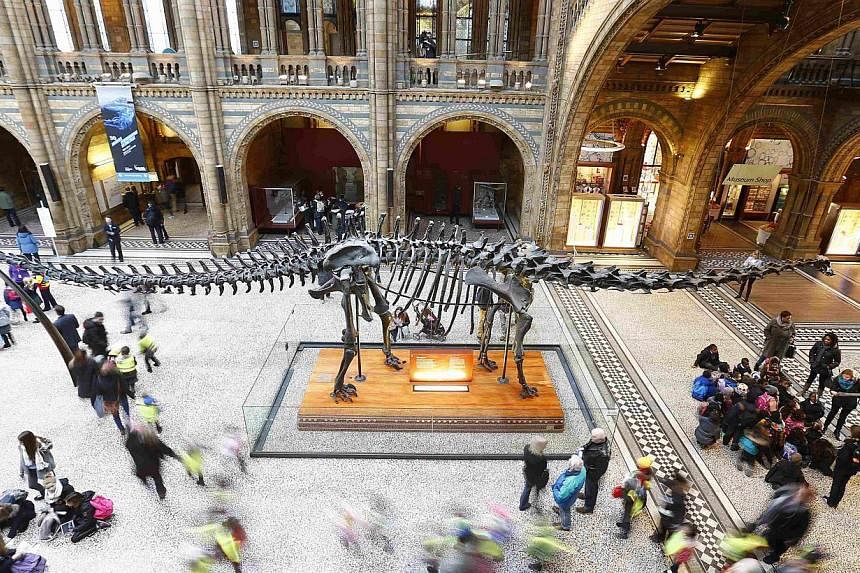The Natural History Museum in London is replacing its skeleton of the long-necked dinosaur Diplodocus - an iconic denizen of the main entrance hall for nearly four decades - with a blue whale skeleton.
It seems like a national tragedy: the loss of something characteristically British, a popular tourist attraction that has inspired generations of children and families to flock to a museum. No wonder that the hashtag #savedippy trended on Twitter.
I am a palaeontologist who studies dinosaurs in the UK, and it might be assumed that I am in a state of depression, racing to sign an online petition to stop this abomination (scheduled for completion in 2017). But, in fact, I am not too bothered by the news.
What gives?
Well, for one, things change. The Diplodocus skeleton has been on display since 1979, five years before I was born. Just like 66m years ago, when dinosaurs were suddenly wiped out by an asteroid and our furry ancestors took over, the time has come again for a dinosaur to step aside and a mammal to take centre stage. Museums, like animals and ecosystems, need to evolve in order to stay relevant.
And that's what this is all about: being relevant. At least that's how I understand the rationale behind the decision, as articulated by Michael Dixon, the Museum's director:
"As the largest known animal to have ever lived on Earth, the story of the blue whale reminds us of the scale of our responsibility to the planet. This makes it the perfect choice of specimen to welcome and capture the imagination of our visitors, as well as marking a major transformation of the Museum."
Humans are changing the planet at an unprecedented pace. Climates, sea levels, and ecosystems are being altered at a rate that probably exceeds most of the mass extinctions that have occurred during Earth's long history, perhaps even the one that killed off the dinosaurs. This message needs to be articulated to the public. And there is no more charismatic creature than a blue whale.
No parting tears
We all love dinosaurs because they are so big, so fascinating, so otherworldly. These were living, breathing animals unlike anything that is alive today. But you know what is even bigger than any dinosaur? A blue whale, the biggest animal that has ever lived.
And if we're not careful, in a generation or two, children will be visiting natural history museums, gawking at the incredible size of blue whale skeletons, and wondering what it was like all those years ago when something so big, so weird was actually alive.
So as much as I love dinosaurs, and as much as I speak up for the importance of studying dinosaurs and exhibiting them for the public, I am fine with this trade-off. It is not as though Dippy is being replaced by abstract modern art or a bigger gift shop or an artisan coffee bar for London's hipster crowd.
Dinosaurs will remain an important part of the Natural History Museum's exhibits. There is still a world-class dinosaur hall displaying some of the world's most important fossils. Just a few months ago, the museum even put on permanent display the skeleton of Sophie the Stegosaurus, a crown jewel of a specimen that is by far the best preserved and most complete fossil of this famous plate-backed dinosaur ever found.
What will happen to Dippy? He (or she) will apparently either remain on display in London, in another part of the museum or perhaps outdoors. And there is even a possibility that Dippy will go on tour, like a rock star, travelling around Britain to inspire all of those kids who can't easily make it to South Kensington.
That sounds like a win-win to me.
The writer is Chancellor's Fellow in Vertebrate Palaeontology at University of Edinburgh. This article first appeared in The Conversation, a website which carries analysis by academics and researchers in Australia, the US and United Kingdom.

